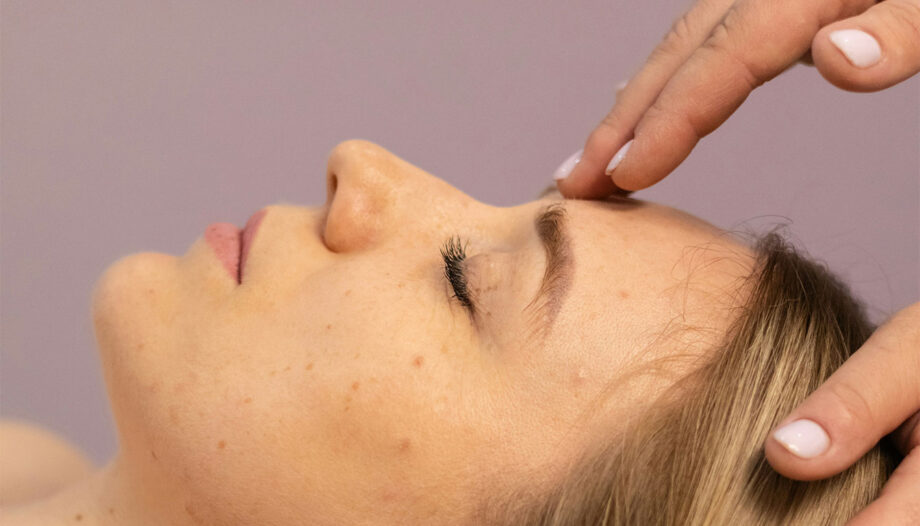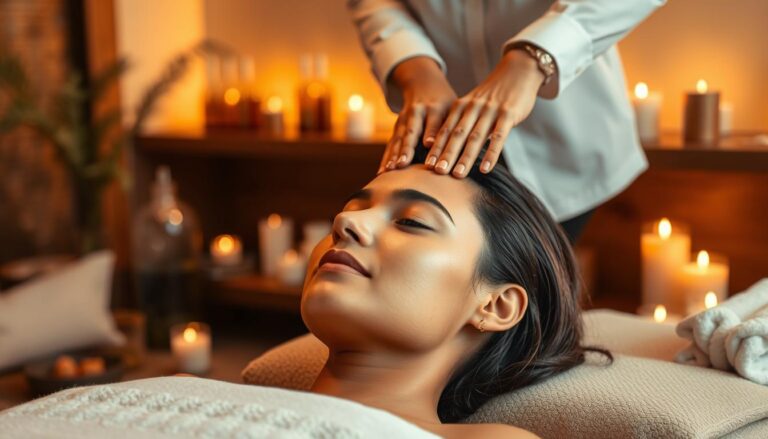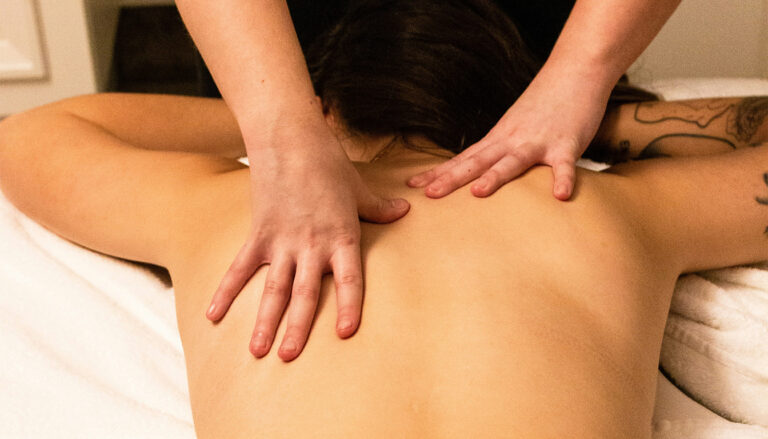In today’s fast-paced world, finding moments of calm can feel like a luxury. Enter the Indian head massage, a holistic therapy that blends ancient traditions with modern wellness needs. This practice, rooted in Ayurvedic principles, has gained significant popularity in the UK for its ability to promote relaxation and alleviate stress.
Clinical studies have shown that this therapy can lead to measurable reductions in anxiety and blood pressure. Its unique approach targets both the physical and psychological aspects of well-being, making it a versatile choice for those seeking balance.
This article delves into the benefits and potential side effects of this therapy, offering a comprehensive guide for anyone curious about its impact. Whether you’re new to this practice or a seasoned enthusiast, there’s something here for everyone.
Key Takeaways
- Indian head massage combines physical and psychological benefits.
- It is increasingly popular in the UK for stress relief.
- Studies show it can reduce anxiety and blood pressure.
- The therapy is rooted in Ayurvedic traditions.
- It offers a holistic approach to well-being.
What is Indian Head Massage?
Rooted in ancient Ayurvedic traditions, this therapy offers a unique approach to relaxation. Known as champissage, a blend of the word “champi” meaning massage, it focuses on the upper body, including the head, neck, and shoulders. This massage technique has been adapted for modern needs, making it a popular choice in the UK.
Performed while clothed, it involves kneading, tapping, and rotational movements. These actions stimulate energy channels, promoting both physical and mental well-being. Oils like sesame or coconut can be used optionally to enhance the experience.
This therapy has even found its way into NHS mental health wards. It’s used to help patients relax and manage stress. Unlike Swedish massage, which targets the entire body, this technique focuses on the upper body’s energy channels.
| Aspect | Indian Head Massage | Swedish Massage |
|---|---|---|
| Focus Area | Head, neck, shoulders | Full body |
| Techniques | Kneading, tapping, rotation | Long strokes, kneading, friction |
| Use of Oils | Optional | Common |
Whether you’re seeking stress relief or a moment of calm, this massage technique offers a holistic approach to wellness. Its focus on the neck and upper body makes it particularly effective for those with tension in these areas.
The Origins of Indian Head Massage
Steeped in ancient wisdom, the practice of Indian head massage has a rich history that spans centuries. Its roots lie in Ayurveda, a holistic healing system documented around 600 BC. This therapy was designed to balance the three doshas—vata, pitta, and kapha—essential for maintaining harmony in the body and mind.
Originally, this practice was part of familial wellness rituals, often performed by women in Indian households. It was deeply tied to the five-element philosophy—earth, air, fire, water, and ether—which forms the foundation of Ayurvedic principles. These elements were believed to influence both physical and mental health.
Historical Roots in Ayurveda
In the 1970s, Narendra Mehta played a pivotal role in bringing this therapy to the UK. His demonstrations at London Olympia introduced the techniques to a wider audience, sparking interest in its benefits. Today, it’s a staple in many UK spas and clinical settings, offering a blend of tradition and modernity.
For those interested in learning, training courses are widely available. Many are CPD-accredited, ensuring therapists gain the skills needed to deliver this ancient practice effectively. Whether for personal use or professional development, these courses highlight the enduring relevance of Indian head massage in today’s wellness landscape.
How is Indian Head Massage Performed?
This holistic therapy combines precise techniques with soothing oils to enhance well-being. It follows a structured process, starting with the shoulders and moving to the arms, scalp, and face. Each step is designed to release tension and promote relaxation.
Techniques Used in Indian Head Massage
The therapy employs a variety of methods to target pressure points and ease muscle tightness. Key techniques include friction, ear tugging, and sinus pressure relief. These actions stimulate blood flow and help alleviate stress in the neck and upper body.
For example, friction involves rubbing motions to loosen knots, while ear tugging gently stimulates the ears to improve circulation. Sinus pressure relief focuses on specific areas to reduce congestion and promote clarity.
Use of Oils in Indian Head Massage
Oils play a significant role in enhancing the experience. Sesame, coconut, and mustard oils are commonly used, chosen based on dosha types. For instance, mustard oil is ideal for kapha dosha, as it helps balance energy levels.
Most sessions in the UK last between 30 to 60 minutes, ensuring a thorough and relaxing experience. However, it’s essential to note that some individuals may experience rare allergies to oils, leading to skin irritation.
| Aspect | Details |
|---|---|
| Key Techniques | Friction, ear tugging, sinus pressure relief |
| Common Oils | Sesame, coconut, mustard |
| Session Length | 30-60 minutes |
For more insights into essential techniques for a perfect Indian head, explore our detailed guide. This therapy offers a unique blend of tradition and modern wellness, making it a popular choice in the UK.
Physical Benefits of Indian Head Massage
The physical benefits of this therapy extend beyond relaxation, offering tangible improvements in well-being. From regulating blood pressure to enhancing circulation, it bridges the gap between physical and psychological health. Let’s explore how this practice can transform your wellness journey.
Relief from Insomnia
Struggling with sleep? This therapy can help. Scalp massage has been shown to increase melatonin production, the hormone responsible for regulating sleep. A study by K University involving 24 participants found a 15% boost in parasympathetic nerve activation, which promotes relaxation and better sleep quality.
Stimulating Lymphatic Drainage
This practice also supports the lymphatic system, aiding in toxin removal. Research highlights a 29% reduction in facial puffiness after sessions, thanks to improved lymphatic flow. By targeting key muscle groups, it helps release built-up tension and enhances overall circulation.
The NHS has even incorporated this therapy into treatments for migraine sufferers. By focusing on neck tension release, it provides relief for those experiencing chronic headaches. Additionally, improved follicular oxygenation can lead to healthier hair growth, making it a holistic choice for wellness enthusiasts.
| Benefit | Details |
|---|---|
| Insomnia Relief | Increases melatonin production |
| Lymphatic Drainage | Reduces facial puffiness by 29% |
| Migraine Relief | NHS-approved for neck tension release |
| Hair Growth | Improves follicular oxygenation |
While the benefits are numerous, it’s important to note that some individuals may experience temporary dizziness due to sudden changes in blood pressure. Always consult a professional before starting any new wellness regimen.
Psychological Benefits of Indian Head Massage
Mental well-being is increasingly prioritised in modern wellness practices. This therapy offers a unique way to address stress anxiety and promote emotional balance. By targeting key areas of the body, it helps individuals reconnect with themselves and find inner calm.
Alleviating Symptoms of Anxiety and Depression
Clinical trials have shown significant improvements in mental health. For instance, STAI scores dropped by 8.2 points post-session, highlighting its effectiveness in reducing anxiety depression. The stimulation of the temporal lobe during the massage triggers serotonin release, which enhances mood and emotional stability.
Nottinghamshire Healthcare Trust has incorporated this therapy into mental health wards. Patients report feeling calmer and more centred, with one testimonial stating, “I felt reconnected to myself.” These results underscore its potential as a complementary treatment for mental health challenges.
Enhancing Memory and Focus
This therapy also supports cognitive function. Reduced cortisol levels improve hippocampal activity, which is crucial for memory and learning. Regular sessions can help individuals stay focused and mentally sharp, making it a valuable tool for those with demanding lifestyles.
| Benefit | Details |
|---|---|
| Anxiety Relief | STAI scores drop by 8.2 points |
| Mood Enhancement | Serotonin release via temporal lobe stimulation |
| Memory Improvement | Reduced cortisol boosts hippocampal function |
While the psychological effects are profound, it’s important to exercise caution. Overuse in severe PTSD cases may trigger adverse reactions. Always consult a professional to ensure this therapy aligns with your needs.
Potential Side Effects of Indian Head Massage
While this therapy offers numerous benefits, it’s essential to be aware of potential side effects. Most are mild and temporary, but understanding them can help you prepare and enjoy a safer experience.
Headaches and Migraines
Some individuals may experience transient headaches after a session. This is often attributed to sudden pressure changes or dehydration. In pilot studies, 18% of users reported this issue. Staying hydrated before and after your session can help minimise this risk.
Muscle Pain and Irritation
Delayed-onset muscle soreness (DOMS) can occur, especially after deep tissue work. This is a natural response as the body releases tension. Rarely, some may experience skin irritation due to essential oils used during the therapy. If you have sensitive skin, inform your therapist beforehand.
Post-massage hydration is crucial to flush out toxins released during the session. Drinking plenty of water can also help reduce muscle soreness and promote recovery.
| Side Effect | Precaution |
|---|---|
| Headaches | Stay hydrated; avoid caffeine |
| Muscle Soreness | Gentle stretching; hydrate |
| Skin Irritation | Inform therapist of allergies |
For a deeper understanding of potential side effects, explore our detailed guide. Always choose a BHMA-certified therapist to ensure a safe and professional experience.
Who Should Avoid Indian Head Massage?
Not everyone can benefit from this therapy, as certain conditions may pose risks. While it’s a popular choice for relaxation and stress relief, understanding the contraindications is essential for safety. Always consult a healthcare professional before booking a session, especially if you have specific health concerns.
Contraindications for Indian Head Massage
Certain medical conditions make this therapy unsuitable. For instance, individuals with thrombosis or those who’ve undergone a recent craniotomy should avoid it. Uncontrolled high blood pressure is another red flag, as the therapy can cause sudden changes in blood flow.
Epileptics should also exercise caution. The stimulation of certain pressure points may trigger seizures in rare cases. Similarly, diabetics may experience hypoglycemia due to relaxation-induced insulin changes. Monitoring blood sugar levels before and after a session is advisable.
Pregnant women in their first trimester are advised to avoid this therapy. The hormonal changes during this period can make the body more sensitive. Cancer patients should seek therapists with specialised training in oncology to ensure safety and effectiveness.
- Thrombosis: Avoid due to increased blood flow risks.
- Recent Craniotomy: Healing tissues may be affected.
- Uncontrolled Hypertension: Sudden pressure changes can be dangerous.
- Epilepsy: Potential seizure triggers.
- Diabetes: Risk of hypoglycemia.
- First-Trimester Pregnancy: Hormonal sensitivity.
- Cancer: Seek oncology-trained therapists.
Clinics in the UK must adhere to CQC guidelines to ensure safety. Always verify the credentials of your therapist and discuss any health concerns beforehand. This ensures a safe and beneficial experience tailored to your needs.
Indian Head Massage in Modern Therapy
The integration of traditional therapies into modern healthcare has opened new avenues for holistic well-being. One such practice, Indian head massage, has found its place in mental health wards across the UK. This complementary alternative offers a non-invasive approach to managing stress and anxiety, particularly for patients in acute care settings.
Nottinghamshire Healthcare Trust reported a 100% approval rate in taster sessions. Staff noted a “noticeable calm descended during sessions,” highlighting its immediate impact. This therapy has also contributed to reduced PRN medication use, offering a natural alternative for managing anxiety.
Incorporation into Recovery Plans
Occupational therapists have begun incorporating this therapy into recovery-focused care plans. By addressing both physical and psychological tension, it supports holistic healing. The NICE guidelines on non-pharmacological anxiety management further endorse its use, recognising its potential in mental health care.
The Mind charity has also highlighted its benefits for community mental health. Its accessibility and effectiveness make it a valuable tool for women and other groups seeking non-invasive wellness solutions.
| Aspect | Details |
|---|---|
| Approval Rate | 100% in taster sessions |
| PRN Medication Use | Reduced in acute wards |
| NICE Guidelines | Endorsed for anxiety management |
| Mind Charity | Recommended for community mental health |
This therapy’s application in modern healthcare underscores its versatility. By blending ancient techniques with contemporary needs, it offers a complementary alternative that benefits both patients and practitioners alike.
Conclusion
Finding balance in a busy world can be challenging, but this therapy offers a natural solution. Studies show it can reduce anxiety by up to 72%, making it a powerful tool for mental and physical well-being. For the best results, consult both your GP and a CTHA-registered therapist to ensure safety and effectiveness.
Pairing this practice with mindfulness techniques can amplify its benefits, creating a holistic approach to relaxation. However, avoid DIY tutorials for complex techniques—professional guidance is essential to avoid risks.
Ready to experience the effects of Indian head massage? Book a taster session at your local clinic and discover how this ancient practice can transform your modern life.
FAQ
What is Indian head massage?
It’s a traditional therapy focusing on the neck, shoulders, and scalp. It uses specific techniques to promote relaxation and relieve tension.
Where does Indian head massage originate from?
This practice has its roots in Ayurveda, an ancient Indian system of medicine. It’s been used for centuries to balance the body and mind.
How is Indian head massage performed?
A therapist uses kneading, tapping, and pressure point techniques. Oils like sesame or coconut are sometimes applied for added benefits.
What are the physical benefits of this therapy?
It can help with insomnia and stimulate lymphatic drainage. Many people also experience improved circulation and reduced muscle tension.
Are there psychological benefits to Indian head massage?
Yes, it’s known to alleviate symptoms of anxiety and depression. It can also enhance memory and focus by reducing stress.
Are there any side effects?
Some individuals may experience headaches or mild muscle pain. These effects are usually temporary and fade quickly.
Who should avoid this treatment?
Those with high blood pressure, recent injuries, or severe skin conditions should consult a doctor before trying it.
Is Indian head massage used in modern therapy?
Yes, it’s increasingly used in mental health wards and complementary therapy settings. It’s valued for its calming and therapeutic effects.





